#small minnow mayfly
Note
man & girl go out to drive under moonlight. they stop at on at a side of road. he turn to his girl and say: "baby, i love you very much"
"what is it honey?"
"our car is broken down. i think the engine is broken, ill walk and get some more fuel."
"ok. ill stay here and look after our stereo. there have been news report of steres being stolen."
"good idea. keep the doors locked no matter what. i love you sweaty"
so the guy left to get full for the car. after two hours the girl say "where is my baby, he was supposed to be back by now". then the girl here a scratching sound and a voice say "LET ME IN"
the girl doesn't do it and then after a while she goes to sleep. the next morning she wakes up and finds her boyfriend still not there. she gets out to check and man door hand hook car door.
String identified:
a & g g t t gt. t t at at a a. t t g a a: "a, c"
"at t ?"
" ca . t t g , a a gt ."
". ta a at t. t a t t g t."
"g a. t c att at. at"
t g t t gt t ca. at t t g a " a, a t ac ". t t g a catcg a a c a "T "
t g 't t a t at a g t . t t g a a t t t. gt t t cc a a a ca .
Closest match: Cloeon dipterum genome assembly, chromosome: 3
Common name: Small minnow mayfly
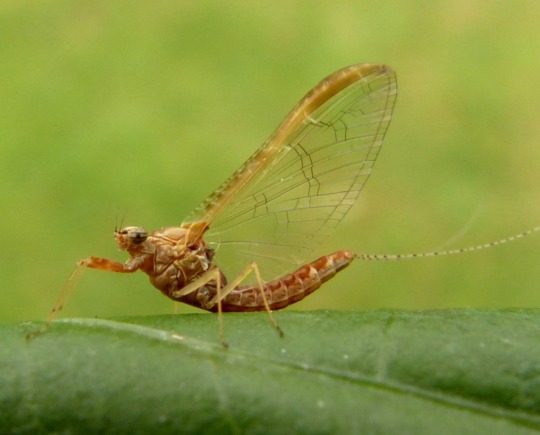
#tumblr genetics#genetics#bugs#insects#small minnow mayfly#man door hand hook car door#asks#requests#sent to me
2K notes
·
View notes
Note
Trick or treat!! :D
Happy halloween :D:D:D:D!!! i dont yet have any qsmp memes ive made so i dont have any of those to give unfortunately. however I do have a singular unposted c!bbh meme!

i also have a picture of one of my favorite macroinvertebrates: a mayfly nymph of the Baetidae family!! ill put it below a readmore in case you do not like bugs (though to be pedantic they aren't bugs, theyre Ephemenoptera and only Hemiptera are true bugs :D)
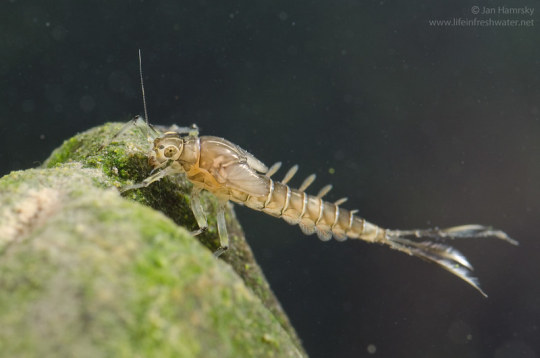
i really like them cuz whenever im doing a macroinvertebrate survey its really fun to lift up a rock and just see a little guy clinging to it all flattened and such. theyre very cute to me. their family is so small when they grow up that theyre called the small mayflies (and also the minnow mayflies)!
3 notes
·
View notes
Text
ENVS 3000 Blog Post 1
Prompt: Describe your current relationship with nature. How has this developed/evolved? Who offered you “a sense of place,” as described in our textbook?
I was born in Mexico and lived there for three years before moving to Manitoba for about a year. It was there where I would say my interest in nature really began to take a foothold and grow. I lived in a large house close to a golf course and small forested area, with a ditch running just outside the front of the house. Springtime would be marked with the appearance of Mayflies, which hatched in such monumental proportions that whole cars, or windows would be completely covered by them, along with budding . Summertime resulted in dragonflies and rain, which filled up the ditch in front of my house and would spawn plentiful numbers of leopard frogs, tadpoles, and dragonfly nymphs.
Later I moved with my mother to Toronto, where we moved from two homes before finally settling down into a nice one close to the beach and a ravine. These nearby locations also helped fuel my interest in nature, with the nearby beach’s wavebreakers hosting invasive round gobies and zebra mussels, as well as native mysis and minnows. The nearby ravine hosted a plethora of invertebrates and vertebrates that you wouldn’t normally find on a city street or backyard, some examples of which are salamanders, amphipods, large sphinx moths, woodpeckers, bats, foxes, and more. I am incredibly grateful to have grown up in a neighborhood where I can observe many different phyla of organisms in a natural setting as well as their interactions with each other in an ecosystem.
As for who/what has offered me a sense of place, I would say that it is my current community in Toronto, as well as my direct and extended family from Sinaloa, Mexico. I feel like traveling between my grandparent’s home in Mexico, to my house here in Canada, really opened my eyes to the variety and uniqueness of ecosystems on earth. The predominant ecosystem where my grandparents live is quite dry, with dominant plant species being drought resilient trees, shrubs, and cacti, with rain occurring seasonally from July to September. They are also located fairly close to the coast, where I have observed many mollusk, oceanic bird, and fish species. Whenever I am out with my family for a walk in the ravine, or my cousins down in Mexico, I can often identify or point out organisms that may escape their view, or know little about. In particular, my favorite group of organisms are fish, although I also research other aquatic phyla such as crustaceans, mollusks, and cetaceans, and my family will often come to me if they ever have any questions related to aquatic organisms. It is thanks to them that I feel like I have a sense of place in society, and are part of the reason I chose to pursue a career in marine biology.
0 notes
Text
10 Walleye Fishing Tips
Do you fish for walleye? Would you like to catch more walleye? In this article, we share walleye fishing tips to help you catch more walleye.

1. Walleye & Tributaries
The mouth of a tributary and the surrounding water attract walleye during the period from spring to fall. If you find a tributary, fish that area for walleye. Currents are created in lakes by inflowing tributaries.
2. Walleye Movements
Walleye move from deep resting areas to shallow, feeding spots using rocky points and sand bars. If you come across sand bars and rocky points, you just might have found hot spots for walleye.
3. Best Feeding Times
Walleye see well in low light which makes dawn and dusk the best feeding times for walleye. Points, weed beds, flats, reefs, and shallow to mid-depth shorelines are also nighttime food sources for walleye.
4. Side Structures
The side of structures that is hit by waves is a prime target area for walleye. The waves disrupt the water’s surface, diffusing light and facilitating feeding. Target the wave-hit side of structures for walleye. If you would like to learn more walleye fishing tips, then click this link.
5. Calm & Sunny Days
It can be challenging on calm and sunny days to catch walleye. They usually go deeper into structures far away from the sunlight. Target those deep structures and the shade plants provide.
6. Vertical Jigging
One of the best techniques for walleye fishing in rivers is vertical jigging. However, high winds or rains can dirty the water and put the fish off the jig bite. Try trolling the bottom when the water condition worsens.
7. Trolling Spoons
One effective way to catch walleye is using trolling spoons. However, getting them deep down can sometimes pose a serious challenge. Use snap weights, in-line sinkers, diving planers, downriggers, or lead-core lines to attain the depth needed to reach walleye.
8. Early Spring or Late Winter
In early spring or late winter, when walleyes are moving up rivers to spawn, fly fish for walleye using nymphs or yarn flies that drifted beneath salmon reeds or in deep holes.
9. Mayfly Hatch
During a mayfly hatch is a challenging time to catch walleye. Use a mayfly rig, which is a small spinner with a portion of a nightcrawler on a small hook, to increase your chances of catching walleye.
10. Live Bait
Take all types of live bait with you when jigging for walleye. The general consensus is to use minnows in cold waters and night crawlers and leeches or soft plastics in warmer waters. However, sometimes leeches and crawlers do better than minnows in cold water especially if the water is dirty. Similarly, walleye will prefer minnows in the summer heat to other bait.
Conclusion
Walleye fishing is challenging but with knowledge, skills, and tactics, it can be rewarding. In this article, we share walleye fishing tips to help you catch more walleye. If you would like to learn more about fishing, then visit Hunting Terrain.
1 note
·
View note
Photo


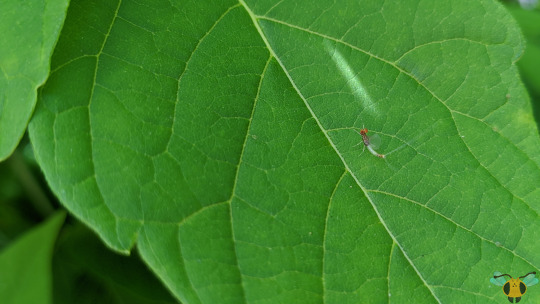

Small Minnow Mayfly - Plauditus punctiventris
Gonna be perfectly honest with this insect post: I am not 100% sure what this particular Mayfly truly is. Based on its physical characteristics that are visible in these pictures, I am sure of the following: this Mayfly is a subimago or imago Mayfly as indicated by the presence of wings. Whether subimago or fully developed depends on the specie, and if this is a subadult imago it needs one more molt to receive more prominent adult coloration and for its parts to finish development. The position of the large eyes on top of its head seems to indicate this is a male individual. Males possess these large eyes in addition to the lateral eyes on the sides of their head. If you zoom in on Pictures 1 and 2, you might be able to see evidence of lateral eyes, but sadly it’s not conclusive with the images taken. Furthermore, taking the eyes into consideration, we can also see that this individual only has 1 pair of wings. This is a common characteristic of Mayflies that belong to the family Baetidae.
All this in consideration, I’ve looked around for species that match these characteristics and the features that can be visible in the photos taken. As well, the species have to be those that could conceivably be found with range of Southern Ontario, particularly by Toronto’s lakeshore. If any bug hunters can find more individuals like this near the lakeshore, that would be great. Moreover, the documentation of this insect would have to be consistent with documented adult emergences of Mayflies as they begin life in water but emerge onto land when they reach adulthood. Arrgh, science! There are quite a few species that fit this mould, but my frontrunners are Diphetor hageni, Procloeon viridioculare and the title insect: Plauditus punctiventris. They all seem to fit but without a live specimen and a high-powered microscope to confirm, all I can do is speculate and observe. If anyone has any confirmation to this identification, please let me know. It’s not everyday you find an adult Mayfly in the wilderness. Their adult lives are very fleeting, emerging only to mate. Underwater as a nymph however, they can enjoy years of youth.
Pictures were taken on June 16, 2020 with a Google Pixel 4.
#jonny’s insect catalogue#insect#mayfly#small minnow mayfly#ephemeroptera#plauditus penctiventris#toronto#2020#june2020#ontario insect#entomology#nature#invertebrates
0 notes
Text
Fly Tying Friday - The Hale Bopp Leech as tied by Bill Ninke
Let me take a moment to introduce the fly tier who submitted this week’s pattern. Bill Ninke is a member of my local Trout Unlimited chapter and someone I have been associated with for many years. As a fly tier, Bill has forgotten more than I will ever learn on the topic. He taught fly tying in my TU Chapter when I joined the organization back in the early eighties. I never attended one of his beginner students in those early days, but I should have, as it would have indeed flattened out my learning curve. Instead, I took the hard way of figuring things out on my own. Since those early days, I have had many had opportunities to attend his advanced classes and always walked away learning something new. Today I have the pleasure of teaching alongside him, and he still manages to teach me something every time we sit down at the vice together! What follows is in Bill’s own words. Although he initially tied the fly for trout, we all know leeches are an important food source in our warm water rivers, lakes, and ponds. I am confident this one will be a killer for bass and panfish!
The Black Bead Head Hale Bopp Leech as tied by Bill Ninke
When questioned in classes and at tying demos as to what my two highest producing patterns are, the Parachute Adams and the Carlson’s Copper Cripple are at the top of the list.. But I’ve never had anyone ask on which pattern I have caught most of my big trout. Well, if anyone ever does ask, my answer will be this month’s pattern, the Black BH Hale Bopp Leech. It’s a still water fly and, as experienced fly fishers know, still waters hold the biggest fish. There is little current to fight in such water to sap energy. Trout just cruise slowly around, eat all the goodies present, and grow fat. And those goodies are mostly Mayfly, Dragon Fly and Damselfly nymphs, small fish and leeches.
This pattern was created by Derek Fergus, a California tier and guide, around 1996-7 when the Hale Bopp comet was visible from earth. If you look at the above photo you notice that with the bright bead head and long wispy tail the pattern resembles a comet. The construction is quite simple – a bead head, marabou tail, and mohair (African goat) body. Mohair, a seal substitute, is quite translucent. A thread finishing band behind the bead gives a little hot spot. You might say it’s just a mohair leech. But there are some subtle but important differences. First, the bead is one size smaller than traditionally used for the hook size. This gives the fly a gliding action like a real leech, not the heavy up and down jigging action of a Clouser minnow. The tail is extra-long and thin for lots of sinewy motion. And the body is very aggressively picked out so that the fly is almost translucent with the body fibers able to move freely as the fly is slowly stripped.
I was introduced to this fly around 2000 by Gary Fritz, one of the premier guides on the Missouri River. Gary died a few years ago but the important properties of the fly that he taught me will remain forever in my memory. The pattern is tied commercially by Solitude Flies. If you look at their version you’ll see a black bead. But Gary had them specially tied for him with a silver bead since he thought it fished slightly better. It’s Gary’s version I present here. Gary liked fishing the fly on a floating line with slow stripping and an occasionally pause. Certainly has worked for me.
When I first tied the pattern for myself I used mohair dubbing for the body. If you’ve ever tried dubbing mohair you’ve probably done a lot of swearing. It’s very slippery and hard to control. In recent years I’ve gone to using Mohair Yarn from J Fair. Other mohair yarns will probably work but I haven’t tried them. The yarn is simply tied in and wrapped under high tension with the yarn fibers pulled back with each wrap. No bad words come from my mouth when using the yarn. Then the body is picked out. The key is to use a strongly hook, like that on the tip of a Materelli style whip finisher, to pull fibers out and create a halo like body. I typically spend more time picking out the body than I spend tying the fly.
Although I mostly tie and fish a black version, I also occasionally use an olive one. A copper bead is used on this version. I’ve included an olive one in the photo. I also tie versions without a bead on size 10 hooks in both colors.
Water temperatures are starting to decrease. Trout will be packing in calories to maintain themselves for the Winter. So from now through October is prime time to use this pattern. You’re sure to get lots of “pops” in still water on your Bopps.
Material List:
Hook: Daiichi 1260, TMC 200R or similar curved shank hook in size (a TMC 2312 used in fly in the photo)
Bead: 1/8 inch Silver Tungsten
Thread: Red Danville 6/0
Tail: Long strands from a premium black Marabou plume
Body: J. Fair Black Mohair Yarn
Tying Instructions:
1. Mount bead on de-barbed hook and place hook in vise.
2. Attach thread to hook slightly behind the bead, wrap back to the bend and then back to starting point. Trim thread tag.
2. Tear off about 20 strands from marabou plume.
3. Tie in with tips of strands pointing rearward so tips extend two shank lengths behind fly. Overwrap with thread back to the bend. Trim forward marabou.
4. Tie in mohair yarn tag end rearward.
5. Wrap yarn forward behind thread under high tension to bead. Tie yarn off securely and trim yarn tag.
6. Form a small thread band behind bead, whip finish, trim thread
7. Apply head cement to thread band.
0 notes
Text
What Kinds of Fish Are in Apple Valley Lake?
Apple Valley Lake is a favorite destination among anglers. It is a clear lake with an average depth of 30 feet. Apple Valley Lake is well stocked with a variety of fish species.

You might be planning your next fishing adventure here and are wondering: “What kind of fish are in Apple Valley Lake?
Apple Valley Lake is home to 13 kinds of fish species:
Black Bass
Bluegill
Brown Trout
Catfish
Crappie
Largemouth Bass
Perch
Rainbow Trout
Smallmouth Bass
Striped Bass
Sunfish
Trout
Walleye
This article provides interesting facts about each of these fish species and tips on how to catch them. Also, read on to learn more about the best spots, and the best times to go fishing in Apple Valley Lake.
13 Different Fish Species in Apple Valley Lake
1. Black Bass - found throughout a large area east of the Rocky Mountains in North America, from the Hudson Bay basin in Canada to northeastern Mexico. This freshwater fish is known as a strong fighter and tastes good.
2. Bluegill - one of the most popular species of sport fish in the US. Bluegills are prolific breeders and spawn in late spring and early summer. They grow to an average length of 19.1 cm (7.5 inches) with a maximum reported length of 41 cm.
Small-scale artificial lures are effective in catching bluegills. Crickets, wax worms, and beetles are great live baits when hunting for bluegill.
3. Brown Trout - is known to be one of the wariest and wiliest fish species in Apple Valley Lake. What makes them hard to catch is their feeding lane of about two inches and their habitat.
Browns trouts are more likely to be found in undercut banks, the calm water around log jams, and the deepest eddies and pools.
4. Catfish - plentiful and taste great tasting, catfish can thrive in many water systems and can be readily caught from the bank as well as from a boat using a simple bait rig.

5. Crappie - delicious and easily catchable, Crappies inhabit continental North American freshwaters. They weigh at a range of 1-5lbs, are abundant and are highly popular, especially for young anglers and those learning how to fish.
6. Largemouth Bass - an aggressive fish species that can be targeted using different fishing techniques, Largemouth Bass are ambush feeders that pounce on nearly any prey that comes by them.
It’s good to keep in mind that bass comes out of their protective shelter when it’s cloudy and there is little or no sun. This means that fishing near areas where bass might go for shelter when it’s sunny can ensure a good catch.
7. Perch - one of the most common panfish in North America, the yellow perch is identified by its brass-colored body with distinct green-olive, stripes. They can live up to 10 years and reach an average length of 5 to 11 inches.

8. Rainbow Trout - differentiated from the other trout species by their strikingly prominent pink-red horizontal stripe that extends down each side of their body, rainbow trout feeds on mayflies, caddisflies, stoneflies and their larvae, small mollusks and fish.
It prefers temperatures below 70 degrees. Rainbow trout can be frequently found in cool, deep reservoirs, as well as cold tailwaters below dams. It lives in streams with stable riffles of rocks and gravel, for nursery and spawning areas.
9. Smallmouth Bass - commonly found around the Midwestern part of the United States, they have a mouth much smaller than largemouth bass but can grow to be around the same size.
Smallies are easier to hook in places where they are most likely to spawn. These fish are often at depths of about 20 to 30 feet, but when it gets warmer, they can get closer to the surface.
10. Striped Bass - pound-for-pound, one of the strongest fighting freshwater fish you can catch, striped bass can reach a massive size of more than a hundred pounds. However, the more common mature size of striped bass is 20 to 40 pounds.
The most recommended live bait for striped bass are alewives, gizzard shad, threadfin shad, and American eels.
Striped bass is very light-sensitive at night. Because of this, it is recommended to keep your artificial light to a bare minimum when fishing for striped bass.
11. Sunfish - usually found in shallow water around some kind of cover, especially back in coves, Sunfish are easy to catch.
They will eat just about any kind of natural bait. Worms are commonly used as bait for catching sunfish but crickets, grubs, catalpa worms, and even small balls of bread work just as well.
12. Trout - the fourth most popular fish game in North America, trout can frequently be found in places near or above aquatic vegetation, around logs, stumps, rocks or other structure at stream inlets, and deeper waters.

13. Walleye - is a species of freshwater fish native to Canada and the northern United States. Walleyes have a very large mouth with razor-sharp teeth.
Their diet changes quickly as they begin to grow, changing from invertebrates to other fish. Technically, they never stop growing and have a vicious appetite.
Walleyes inhale their prey most of the time and if that flow is prevented you’ll get a short strike. Because of this, it is recommended to use a light fishing line to get less resistance and drag when using a lure.
One of the best live baits recommended for catching walleye are minnows, especially here in Apple Valley Lake where the water is cool and clear.
Is a fishing license required in Apple Valley Lake?
If you intend to take fish from Apple Valley Lake, or from any body of water in Ohio for that matter, you must have a valid Ohio fishing license.
Ohio fishing licenses are available as:
Daily fishing licenses
Annual fishing licenses
3-year fishing licenses
5-year fishing licenses
10-year fishing licenses
Lifetime fishing licenses
Is there a daily fishing limit in Apple Valley Lake?
Depending on the kind of fish, there is a state-wide daily limit in Ohio:
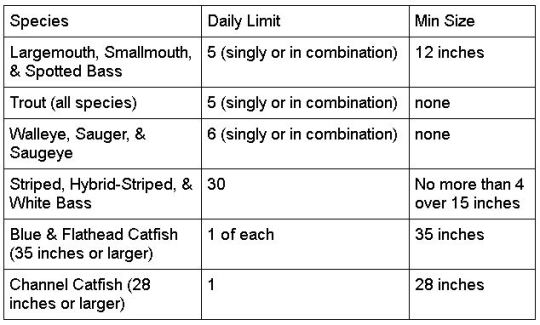
It is also important to note that the lake sturgeon is an endangered species in Ohio and must be returned unharmed to the water immediately if caught.
When is the best time to fish in Apple Valley Lake?

No-wake hours on Apple Valley Lake are from sunset to sunrise. This is the best time to fish in Apple Valley Lake. During summer, the best times to fish are early morning and late evening. During spring and fall, however, it's best to go out around dusk.
What are the best fishing spots in Apple Valley Lake?

80 feet from shore on any part of the lake is a no-wake area. If you have a lakefront home, that means you can fish straight from your dock.
Places where there are a lot of weeds are one of the best fishing spots in Apple Valley Lake. A nice comfy weed bed provides an opportunity for a lot of big fish, such as largemouth bass, to ambush their prey.
There are also places where structures, such as downed trees, are sunk in the lake. These structures provide shelter for the fish. Sunken structures also provide them the opportunity to ambush other fish.
Finally, the inlets and outlets are also great fishing spots because the water in these areas are generally much cooler and favorable to fish.
Is there a fishing club in Apple Valley Lake?
Apple Valley Lake has a local fishing club. The Fish and Restocking Club in Apple Valley Lake spearheads efforts to water test the lake and stock the lake with different species of fish to ensure the lake’s excellent condition.

Just last Nov 2019, Apple Valley Lake was restocked with 1,000 lbs. of walleye, 250 lbs. of minnows, and 1,750 lbs. of crappie.
The Fish and Restocking club can provide valuable information on where sunken structures and weed beds can be found in Apple Valley Lake. Connecting with them is also a great way to meet fellow anglers.
Is there a fishing tournament in Apple Valley Lake?
Apple Valley Lake holds two bass tournaments every year as well as catch and release tournaments on Tuesday and Thursday evenings.
The Buddy Bass Tournament is a community event that brings not just fishing enthusiasts but also family and friends to support the anglers, picnic, and have a great time. Toth and Team avidly supports these events.
youtube
Teams of two can be composed of property owners or a property owner and a guest. A team may also consist of one contestant who obtains a single day pass for his boat prior to the tournament date and an Apple Valley property owner.
You can own property in Apple Valley Lake for as low as $5,000 and be a part of this great community.
In the recently concluded Buddy Bass Tournament held last May 2019, the largest bass caught was 4.96 lbs.
There’s also an annual Youth Fishing event held at Bennett Park.
Related Questions
What other fishing sites are near Apple Valley Lake?
youtube
There are 5 scenic places to fish near Apple Valley Lake:
Kokosing River
Mohican River
Jelloway Creek
Barney Run
Schenk Creek
In addition, I have also written about 7 top boating and fishing lakes in Ohio. Read the full article here.
What other outdoor activities can a sportsman do near Apple Valley Lake?
White-tail Deer Hunting - Apple Valley has a successful deer hunting program within municipal limits. Thayer Ridge Park and Indianfield Bluffs Park allow deer-hunting with certain specific rules:
“Archers, by permit-only, assist the Park District with our deer management program, during Ohio’s white-tailed deer archery season. Archery participants pursue their sport at Indianfield Bluffs throughout the week (including weekends) during archery season which typically runs from the end of September through the beginning of February.”
Waterfowl and Migratory Bird Hunting - Ohio state allows hunting of geese, ducks, mergansers, and coots 30 minutes before sunrise to sunset during the regular waterfowl season. As with fishing regulations, there’s also a specific daily limit depending on the type of waterfowl or migratory bird.
Apple Valley Lake OH is indeed a sportsman’s paradise. It’s a perfect place for rest and relaxation. Call us at 740-390-0735 to know more about how you can own property at Apple Valley and be able to fish anytime you like in one of the most sought after fishing destinations in the State of Ohio.
youtube
In case you can not view this video here, please click the link below to view What Kinds of Fish Are in Apple Valley Lake? on my YouTube channel: https://youtu.be/QEyrJBxpQmA
#Sherrie Toth#Apple Valley Lake OH Homes#Homes in Apple Valley Lake#Homes for Sale in Apple Valley Lake OH
0 notes
Photo

Good morning 👋. A couple of days ago I found this male Small Minnow Mayfly (possible Callibaetis sp.😅). This boy was perched peacefully on a wall 😊. So you may wonder how I know this mayfly is a male..? Male mayflies have the very visible large red cylindrical eyes which face upward. Scientists speculate that these eyes are meant to help seek female mayflies flying overhead. This allows male mayflies to approach unsuspecting female mayflies and 'clamp' to them. Mating occurs in midflight 😮. So what do you think about this photo? Your comments are most welcomed below 👇. #NikonD7200 #Nikkor105mm #Raynox250 , f/16, 1/50s, ISO 160. If you are interested this photo please leave a message below and/or visit my FB page 'Wings to Flt by Salci'. Thank you and have a great Monday. Best regards ✌. https://www.instagram.com/p/B2eBmXWJEO_/?igshid=pg8rwiwtqeyz
0 notes
Text
The common whitetail or long-tailed skimmer (Plathemis lydia) is a common dragonfly across much of North America, with a striking and unusual appearance. The male’s chunky white body (about 5 cm or 2 inches long), combined with the brownish-black bands on its otherwise translucent wings, give it a checkered look. Females have a brown body and a different pattern of wing spots, closely resembling that of female, the twelve-spotted skimmer. Whitetail females can be distinguished by their smaller size, shorter bodies, and white zigzag abdominal stripes; the abdominal stripes of L. puchella are straight and yellow.
The common whitetail can be seen hawking for mosquitoes and other small flying insects over ponds, marshes, and slow-moving rivers in most regions except the higher mountain regions.
Like all perchers, common whitetails often rest on objects near the water, and sometimes on the ground. Males are territorial, holding a 10-to-30-metre stretch (33 to 98 ft) of the water’s edge, and patrolling it to drive off other males. The white pruinescence on the abdomen, found only in mature males, is displayed to other males as a territorial threat.
The nymphs are dark green or brown, but are usually found covered in algae. They feed on aquatic invertebrates such as mayfly larvae and small crayfish, and also on small aquatic vertebrates such as tadpoles and minnows. Because of their abundance, whitetail naiads are in turn an important food source for various fish, frogs, and birds, and also for other aquatic insects.
#gallery-0-4 { margin: auto; } #gallery-0-4 .gallery-item { float: left; margin-top: 10px; text-align: center; width: 33%; } #gallery-0-4 img { border: 2px solid #cfcfcf; } #gallery-0-4 .gallery-caption { margin-left: 0; } /* see gallery_shortcode() in wp-includes/media.php */
Common Whitetail Skimmer
Source: https://en.wikipedia.org/wiki/Common_whitetail
Common Whitetail Skimmer The common whitetail or long-tailed skimmer (Plathemis lydia) is a common dragonfly across much of North America, with a striking and unusual appearance.
0 notes
Text
Yuba River Fly Fishing Report
Jon Baiocchi reports on 11.16.18
Poor air quality conditions exist on the Lower Yuba River but fishing still remains decent for those that put in the work. Flows are stable at 993 cubes, just a tad up from my last report. Water is clear but not for long.

Finally, a storm system will impact the area beginning on Wednesday, it's been 6 months since we've seen the skies open up. The foothills are forecasted to receive 4 inches of rain. Fishing pressure is moderate to light, and not too many boats drifting down either. Lots of bird activity including many Bald Eagles looking for salmon carcasses to Bluebirds feasting on caddis in the evenings. Great observations abound right now.
The last few weeks has seen an abundance of "joey's", 10 to 13 inch wild rainbows, with the occasional bigger fish. As you know the Yuba rainbow pulls like no other resident trout. Strong steelhead genes combined with being on a treadmill (the current) 24 hours a day makes for a very conditioned athlete. All types of presentations are effective right now.
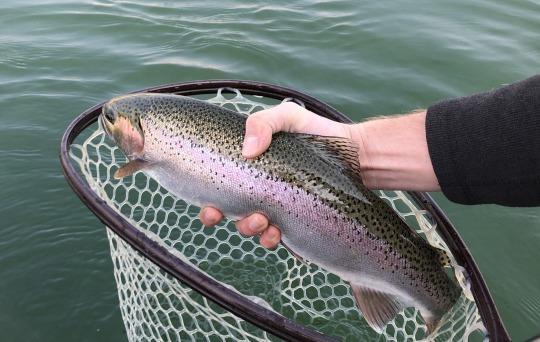
Dry fly fishing remains good from 10am to 2pm, and sometimes even later into the evening. Mahogany duns are waning but still present. There is a thick Psuedocloeon spinner fall starting at around 11am. Day in and day out the BWO has been the most consistent hatch, duns are a size 18. A few pinkie mayflies here and there are also in the mix. The trout have been very selective especially on the flat calm water. We did better yesterday in water that was broken up, yet had a little depth to it. Dry/Dropper rigs continue to perform well, I've been quite surprised how many fish have blown up on the orange Stimi. Nymphing is all about eggs and legs. Jimmy Legs in mottled yellow/brown, brown, black, and egg patterns in peachy king, natural roe, and tangerine dream have been killing it. Other good nymphs include red copper johns, free living caddis, San Juan worms in flesh and red, Hogan's S&M in olive, and Juju baetis. Trout are taking both small and big flies at this time. Swinging the minnow has picked up a few trout and will become more important in the months ahead, make sure your box has some. There continues to be more and more new salmon redds throughout the system, and I'm sure after this rain it will push even more salmon up river. I've been educating anglers on the proper etiquette when encountering a salmon redd while wading. Believe it or not, many have no idea what a redd is (by definition), or what they look like. One young couple I educated had no idea either, but once they were able to identify a redd they just sat and watched the salmon do their thing.

A slamon redd is a depression in the bottom structure of the river, usually at the tailouts of runs, or side channels. The gravel in the Redd
is very clean and bright. Do not wade through these areas as you will crush the eggs, go around them and give them plenty of room. Remember the eggs are in the gravel for approximately 50 days so you will still want to avoid walking through older redds. With such low counts of salmon in the last 20 years, it is imperative that we do all that we can to help the species survive. November Lupines blooming? Mother Nature continues to amaze me, even after 53 years. Plan on fishing the Lower Yuba River after the rains have passed, a little flushing and color in the water will rejuvenate the system. See you on the water...
0 notes
Text
Tìm hiểu về Phù du
Phù du là gì ?
Phù du thuộc bộ phù du (Ephemeroptera). Ephemeroptera được bắt nguồn từ tiếng Hy Lạp, có nghĩa là "cuộc sống ngắn ngủi". Thật vậy, những con phù du khi trưởng thành chỉ sống được từ 1-2 ngày.
1. Tổng quan
Khi trưởng thành, phù du sẽ có thân hình nhẹ và mảnh mai. Chúng cụp đôi cánh lại trong khi ngủ, bạn có thể dễ dàng nhận ra phù du thông qua đặc điểm đôi cánh trước hình tam giác và 2 hay 3 chiếc đuôi dài bắt đầu từ phần bụng.
Hầu hết phù du đều đẻ ấu trùng, trông nó giống như con trưởng thành nhưng ý thức tình dục chưa chín chắn.
Trong thời kỳ ấu trùng, chúng sống dưới nưới và ngoi lên khỏi mặt nước, bay về đất liền khi đã trưởng thành. Tuy chỉ sống được 1 đến 2 ngày nhưng phù du đủ thời gian giao phối và đẻ trứng. Con cái thả trứng xuống một cái ao hoặc con suối nông, hoặc trên thực vật trong nước.
Ấu trùng phù du sống trong suối và ao hồ, chúng ăn tảo và rác rưởi. Tùy thuộc vào loài, ấu trùng thể sống từ hai tuần đến hai năm trước khi rời khỏi nước để hoàn thành vòng đời của nó. Phù du được biết đến với sự xuất hiện theo bầy với số lượng rất đông, thường là vào tháng 5. Ở một số nơi, số lượng lớn phù du xuất hiện có thể phủ đầy đường, làm cho những chuyến lái xe trở nên nguy hiểm hơn.
2. Tập tính và thói quen
Ấu trùng phù du sống trong các con suối chảy nhanh và nông với lượng oxy hòa tan cao và mức độ ô nhiễm thấp.
Ấu trùng phù du là công cụ để các nhà côn trùng học đo lường chất lượng nước. Phù du trưởng thành sống trên đất liền, gần ao và suối. Các nhà khoa học mô tả hơn 4.000 loài trên toàn thế giới.
3. Những họ chính trong bộ phù du (Ephemeroptera )
Họ Baetidae - small minnow mayflies
Họ Heptageniidae - stream mayflies
Họ Ephemeridae - common burrower mayflies
Họ Leptophlebiidae – prong-gilled mayflies
Họ Siphlonuridae - primitive minnow mayflies
4. Những họ phù duy đang có nguy cơ tuyệt chủng
Phù du cát Mỹ (Dolania Americana) là một trong những loài phù du ăn thịt.
Gila mayfly (Lachlania dencyanna), chỉ tồn tại ở một khu vực nhỏ ở New Mexico và đang bị đe dọa tuyệt chủng.
Eurylophella oviruptis, loài phu du này có kiểu đẻ trứng đặc biệt, chúng làm vỡ bụng mình để trứng rơi xuống mặt nước.
Hi vọng thông qua bài viết tìm hiểu về phù du bạn sẽ có thêm nhiều kiến thức mới bổ ích.
Dịch vụ diet con trung quan 5 chúc bạn hạnh phúc!
Pest-Solutions
0 notes
Photo
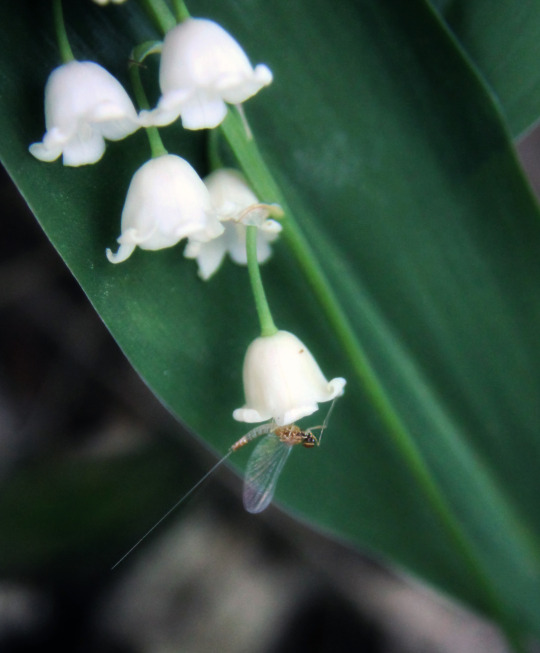
Small Minnow Mayfly
Cloeon dipterum
Harmless to humans & incredibly important to the ecosystem; also an indicator of a healthy, unpolluted environment.
Shown here resting on the poisonous lily of the valley -- perishing, perhaps, to the scent of something sweet. The mayfly is said to have one of the shortest lifespans in the insect kingdom.
The mayfly has served as a symbol of ephemera throughout the ages; engraved by Albrecht Durer in 1495, and described by Aristotle and Pliny the Elder -- the evanescence of this insect can’t help but remind us of our own mortality.
"Does all the beauty of the world stop when you die?" "No," said the Old Oak; "it will last much longer - longer than I can even think of." "Well, then," said the little May-fly, "we have the same time to live; only we reckon differently."
-Hans Christian Andersen
0 notes